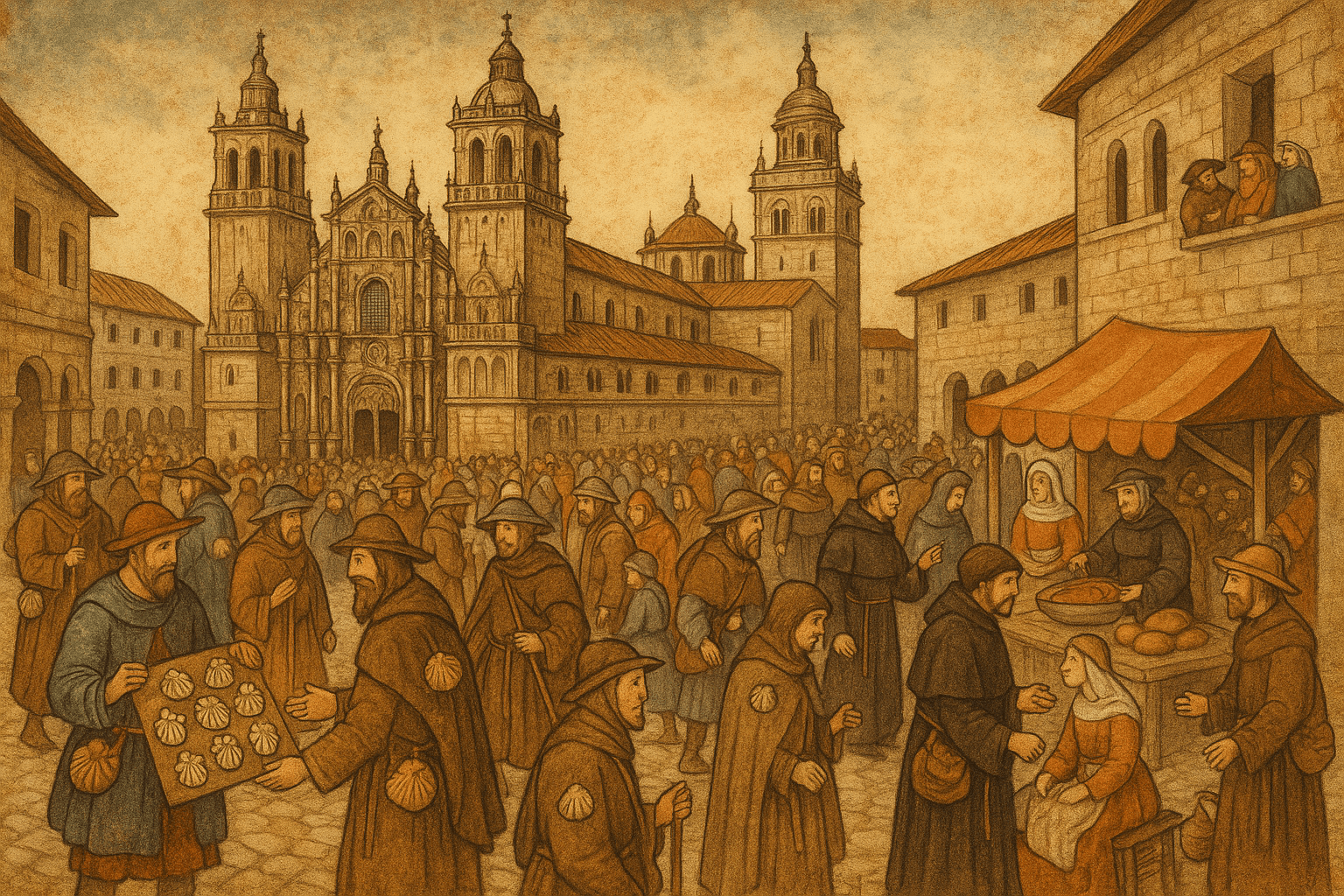The Divine Product: Relics as Economic Engines
At the heart of the pilgrimage economy was the “product”: the holy relic. To the medieval mind, these were not mere objects. They were tangible connections to the divine—the bones of a saint, a fragment of the True Cross, a vial of the Virgin Mary’s milk. These items were believed to hold immense power, capable of healing the sick, forgiving sins, and shortening one’s time in Purgatory. This potent belief created an insatiable demand.
Cathedrals and monasteries became the epicenters of this trade, competing fiercely to possess the most powerful relics. A top-tier relic, like the body of Saint James in Santiago de Compostela or the remains of Saint Peter in Rome, could transform a provincial town into a metropolis. The shrine of Thomas Becket in Canterbury became one of the wealthiest in Europe after his martyrdom in 1170, as pilgrims flocked to the site of his miracles, leaving behind a river of gold and silver in donations.
The competition was so intense it even sparked a market for stolen goods, a practice known as furta sacra—or “holy theft.” Monks would justify stealing relics from other churches by claiming the saint wished to be moved, thereby legitimizing a move that would bring immense prestige and income to their own institution.
Building the Pilgrim’s Superhighway
With millions of people on the move, a vast infrastructure emerged to support them. The great pilgrim routes, like the Camino de Santiago to Spain or the Via Francigena to Rome, were the interstate highways of their day. But a road is only as good as the services along it.
Enter the world’s first hospitality network. Monasteries and abbeys situated along these routes established hospices, offering pilgrims a safe place to sleep and a simple meal, often for free or a small donation. This wasn’t just charity; it was a strategic investment. A well-run hospice enhanced a monastery’s reputation, encouraging more pilgrims—and their money—to pass through.
For those who could afford more, a private sector of inns and taverns flourished, providing better food, wine, and lodging. Furthermore, military orders like the Knights Templar and the Knights Hospitaller played a crucial role. They not only protected pilgrims from bandits but also pioneered an early form of banking. A pilgrim could deposit money at a Templar preceptory in London and receive a letter of credit, which they could then cash in Jerusalem, eliminating the dangerous need to carry large sums of money. It was a financial innovation driven entirely by the needs of the travel industry.
The Souvenir Economy and Franchising Faith
What’s a trip without a souvenir? The medieval pilgrim felt the same way, and an entire economy grew around producing memorabilia. These weren’t just trinkets; they were proof of a completed journey and were believed to retain a spark of the shrine’s holiness.
The most common souvenirs were pilgrim badges, small tokens made of lead or pewter alloy that were mass-produced near the shrines. Each destination had its own iconic brand:
- The Scallop Shell: For Santiago de Compostela
- The Crossed Keys: For Rome
- The Palm Frond: For Jerusalem
- The Canterbury Bell or a vial of Becket’s “blood” (water mixed with red ochre): For Canterbury
These badges were pinned to a hat or cloak, acting as a medieval “I went there!” sticker that also offered spiritual protection on the return journey. Alongside badges, pilgrims bought ampullae—small lead flasks filled with holy water or oil that had been touched to the main relic. This was a brilliant form of “franchising” the faith, allowing a pilgrim to take a piece of the shrine’s power home with them.
Guides, Grifters, and Guidebooks
With so many travelers, many of them illiterate and unfamiliar with foreign lands, the need for information was critical. This led to the creation of the first-ever travel guides. The most famous is the 12th-century Codex Calixtinus, a five-part manuscript that included a detailed guide for pilgrims heading to Santiago de Compostela.
This “Book V” was astonishingly practical. It described routes, distances between towns, and the quality of the local water. It also contained sharp warnings about treacherous river crossings, greedy toll collectors, and dishonest innkeepers. It even had a handy section on local customs and a few key phrases in the Basque language, making it a medieval Lonely Planet or Rick Steves guide.
Of course, where there are tourists, there are scams. The roads were rife with grifters. Geoffrey Chaucer’s Canterbury Tales masterfully satirizes this world, particularly with his Pardoner, who openly admits to selling fake relics—a pig’s bone passed off as a saint’s—to gullible villagers. Merchants sold “fragments” of the True Cross in such quantities that, as one skeptic noted, you could have built a whole forest. The business of pilgrimage had a dark, unregulated underbelly, where faith was a commodity to be exploited.
Ultimately, the business of medieval pilgrimage was a perfect fusion of the sacred and the profane. It was an expression of profound faith that simultaneously fueled economic growth, spurred innovation in finance and hospitality, and created a shared European culture. The pilgrim trail was not just a path to heaven; it was a bustling marketplace that demonstrates, once again, that where people go, an economy is sure to follow.
